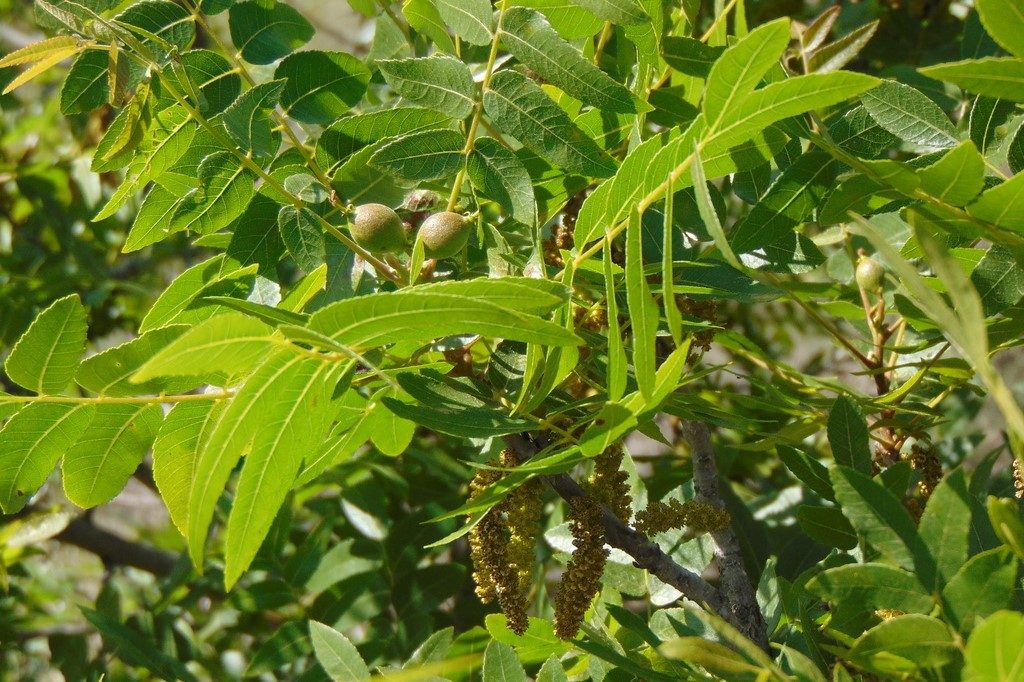
The walnuts of this native tree were likely dispersed by now-extinct, large megafauna that roamed Los Angeles over 10,000 years ago.
FAMILY
Juglandaceae, the walnut family
RANGE
Endemic to California
Species Ecology
The Southern California black walnut is a winter deciduous tree that can reach a height of 15 meters. It can be easily identified by its compound leaves, which are rare in our native trees, and the small walnuts it produces in spring (see picture). During the last ice age, this native walnut was likely more widespread in lowland Los Angeles than it is today. It can now be found in the Southern California foothills where there are adequate water resources—e.g. on north- and east-facing slopes, in deep soils that hold water, and riparian areas.
Threats
Southern California black walnut is threatened in several California counties urbanization, grazing, and potentially by the lack of natural reproduction (the result of habitat fragmentation). Although it can be locally abundant, like on the northern slopes of the Santa Monica Mountains, it occurs primarily on private land and land fragmented by nearby urban areas.
Future Distribution
Climate and land use change predictions show that the suitable habitat of our native walnut could shrink in the future. However, if the walnut is able to disperse, the warmer-drier conditions predicted by climate models could offset some of those losses and allow the Southern California black walnut’s distribution to expand northward. If it does so, it may begin to occur in areas already occupied by the native Northern California black walnut (Juglans hindsii), a critically endangered species, and potentially hybridize. Hybridization can have serious impacts for rare and endangered species, as the unique individual species may be lost.
Conservation
A number of things can be done to protect the Southern California black walnut now and into the future. Current populations need to be maintained, and individual trees prevented from being cut down on public or private land. Populations can be increased by planting trees from local seed sources, as well as protecting lands where the walnut occurs. It is also important to explore human-assisted dispersal in the future—as discussed above, the suitable habitat of Southern California black walnut could increase as much as 174% under potential land use and climate change scenarios. But the trees will likely need the help of natural resource managers in dispersing northward and avoiding contact with Northern California black walnut.
Important Environmental Factors
Data source:
Riordan et al. (2015) in Environmental Conservation 42(2)
Acknowledgements:
We thank Erin Riordan for contributing the future and current models of this species to the Atlas.
References:
- Anderson (2002) in Fremonia 30.
- IUCN (2011) IUCN Red List of Threatened Species Version 2011.1.
- Keeley (1990) in Madroño 37.
